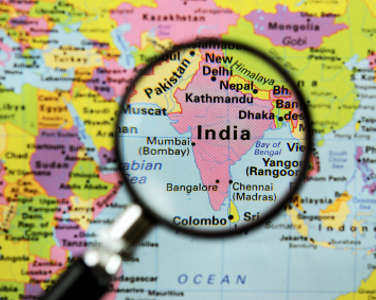Official Names Hindu Nationalist Groups in Orissa Violence
 The ruling party of Orissa state, which labeled last year’s mayhem in Kandhamal district as “ethnic violence,” has publicly admitted that Hindu nationalist groups were behind the killings and arson of Christians and their property.
The ruling party of Orissa state, which labeled last year’s mayhem in Kandhamal district as “ethnic violence,” has publicly admitted that Hindu nationalist groups were behind the killings and arson of Christians and their property.
“It is learnt from the investigation into the riot cases that the members of the RSS [Rashtriya Swayamsevak Sangh], the VHP [World Hindu Council] and the Bajrang Dal were involved in the violence that took place last year,” Orissa Chief Minister Naveen Patnaik told the state legislative assembly last month.
Patnaik, in response to a question by a member of the Communist Party of India, also disclosed that police had arrested 85 people from the RSS, 321 members of the VHP and 118 Bajrang Dal members in the attacks. He said that only 27 members from these groups were still in jail.
The others were either bailed out or acquitted for lack of evidence, which Christians say is due to shoddy or corrupt investigation by police and government attorneys.
Soon after violence in Kandhamal broke out in August 2008, Patnaik blamed it on “conflict of interest” between tribal people and Dalits, people at the bottom of the caste hierarchy in Hinduism and formerly known as “untouchables.”
National media speculated that Patnaik was seeking to deflect attention from the Bajrang Dal, which had been accused of the attacks on the Christians. The Bajrang Dal (Army of Hindu God Hanuman) is the youth wing of the VHP, which is seen as part of the RSS family.
Local Christians had suspected the role of the RSS and related outfits since the violence began on Aug. 24, 2008 — one day after Hindu nationalist leader Laxmanananda Saraswati was killed by Maoists, which are extreme Marxists, and RSS members blamed Christians for it.
The RSS is a Hindu nationalist conglomerate whose political wing, the Bharatiya Janata Party (BJP), was part of the ruling coalition during the 2008 eruption of the violence that killed more than 100 people, mostly hacked to death or burned alive, and incinerated more than 4,500 houses, over 250 churches and 13 educational institutions.
Patnaik’s party, the Biju Janata Dal (BJD) broke up its 11-year-old alliance with the BJP in March 2009, a month before state assembly and national elections were held. The BJD, which fought the two elections alone, won a majority in the state assembly and most seats in parliament from the state.
It was only after the coalition’s break-up that the BJD began to hint at the culpability of the RSS and related groups.
“It was important to break up with the BJP, because I don’t consider them healthy any longer for my state after Kandhamal [violence] — which I think is very apparent to everyone,” Patnaik told CNN-IBN, a private TV news channel, on April 19.
A state government-constituted panel, the Justice Mohapatra Commission of Inquiry, is probing the Kandhamal violence but has yet to issue its final report.
Meantime, a report of another panel, the Justice M.S. Liberhan Commission of Inquiry, said that top leaders of the BJP, the RSS, the VHP and the Bajrang Dal “meticulously planned” the demolition of the 17th century Babri Mosque 17 years ago.
More than 2,000 people were killed in communal violence across the country following the demolition of the mosque on Dec. 6, 1992. The incident polarized voters along religious lines and subsequently contributed to the BJP’s rise in Indian politics.
The Liberhan report, presented to parliament on Nov. 25, indicted several Hindu nationalist leaders, including former Prime Minister Atal Bihari Vajpayee, current Leader of Opposition in the People’s House L.K. Advani, VHP leader Ashok Singhal and former RSS chief K.S. Sudarshan.
Observers said the indictment of extreme Hindu nationalists, however, has come too late, as the BJP no longer seems to be powerful at the national level.














































